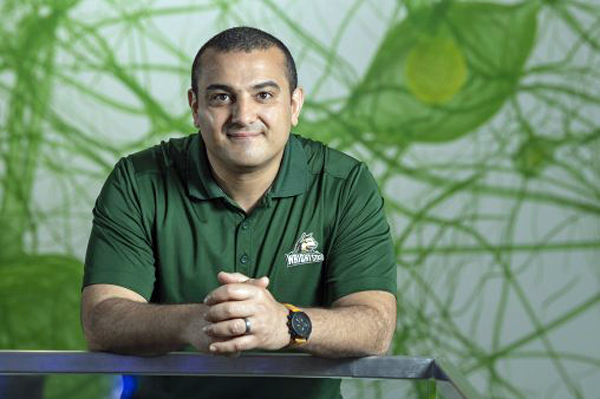
Excerpt from the Dayton Daily News
Wright State is one of three Ohio universities involved in a study that could revolutionize the way we think about aging.
The scientists are studying the role of the nervous system in the way older people have difficulty and become weaker in doing basic tasks as they get older, such as walking, performing household chores and even feeding themselves. That’s what the scientists refer to as weakness in aging.
“We’re not saying that nothing is happening at the muscle,” said Sherif Elbasiouny, a professor of neuroscience, cell biology and physiology, director of neuroengineering education and research at Wright State. “We’re saying that what is really more critical is the changes that are taking place in the nervous system itself.”
Elbasiouny, one of the lead researchers, is working with William Arnold, a neurology professor at Ohio State, and Brian Clark, a professor of physiology and neuroscience at Ohio University. The three have worked together before.
They will examine changes in the brain and nervous system affecting weakness in aging with a five-year, $3 million grant from the National Institutes of Health. The NIH rarely gives out grants this large unless the topic could be groundbreaking. Wright State has about half of the funding.
Recent data shows muscle plays a lesser role in aging than previously thought, Elbasiouny said. He said there is little research about the changes in the nervous system during aging. Age-related weaknesses were previously attributed primarily to loss of muscle mass.

